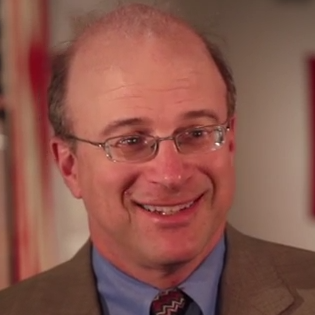
As we approach the 73rd anniversary of the Allied invasion of Normandy, also known as D-Day, historians in Florida State University’s Institute on World War II and the Human Experience continue to work diligently collecting, preserving and archiving artifacts and documents that tell the stories of the thousands of lives that were forever changed on that momentous day.
On the clear, moonlit morning of June 6, 1944, a contingent of American, British and Canadian forces sailed across the English Chanel and stormed the beaches of Normandy. Legions of Allied soldiers traversed shorelines studded with landmines and German gun emplacements in a multipronged operation that would hasten the liberation of France and, eventually, help ensure Allied victory on the Western Front.
Kurt Piehler, associate professor of history and director of the World War II Institute, said that the centrality of the Normandy landings to Allied victory can’t be overstated.
“This was the long-awaited second front that the Soviets had been eager for us to open since we entered the war,” Piehler said. “D-Day represented the Western Allies finally confronting the German forces in France and Germany, which took significant pressure off of the Soviets, who had been dealing with the bulk of the German army throughout the war.”
The successful Allied incursion afforded British and American forces a reliable foothold in occupied France and dealt a decisive blow to a belligerent Germany bent on imperial expansion.
“It was a tremendous morale booster all around,” Piehler said. “In many ways, the British were reluctant to open up this second front, but when the idea was finally embraced, American, British and British Commonwealth forces did exceedingly well, particularly in the first couple of days.”
The expansive collections of documents, personal letters and memorabilia archived in the Institute on World War II and the Human Experience include a number of artifacts that preserve the memories of the men who charged the shores of Normandy on that early June morning 73 years ago.
For example, the institute’s William H. Jenner collection includes a fully preserved Army Ranger uniform that William Jenner, father of Caitlyn Jenner, wore as he and his battalion fought to secure Omaha Beach, a strategically important and heavily defended landing point on the Normandy shoreline. Jenner, a Technician Fourth Grade, was wire chief in charge of communications for his troop. D-Day was his first combat experience.
The institute also houses the Douglas Wilkinson collection, which comprises a large and detailed topographical map of Omaha Beach used by officers to develop sound landing strategies, and the Reubin Askew collection, which contains a letter from Askew, who would later be elected governor of Florida, that describe his feelings of awe and anticipation in the early hours of June 6, 1944.
“To day [sic] is D-Day, a very famous and historical day in the historical world war II [sic]…This invasion early today will rate as the greatest overseas operation in history, designed to destroy the power of Hitler’s Germany and wrest enslaved Europe from the Nazis. Word was received at 3:32 a.m. that the long-awaited invasion had begun…I, Reubin O’Donovan Askew, consider this day the most historical day of my life!”
The mission of the Institute on World War II and the Human Experience is to systematically preserve artifacts and official histories of men and women who fought in the war for future generations.
To arrange an interview, contact Kurt Piehler, associate professor of history and director of The Institute on World War II and the Human Experience, (850) 644-9541, kpiehler@fsu.edu




